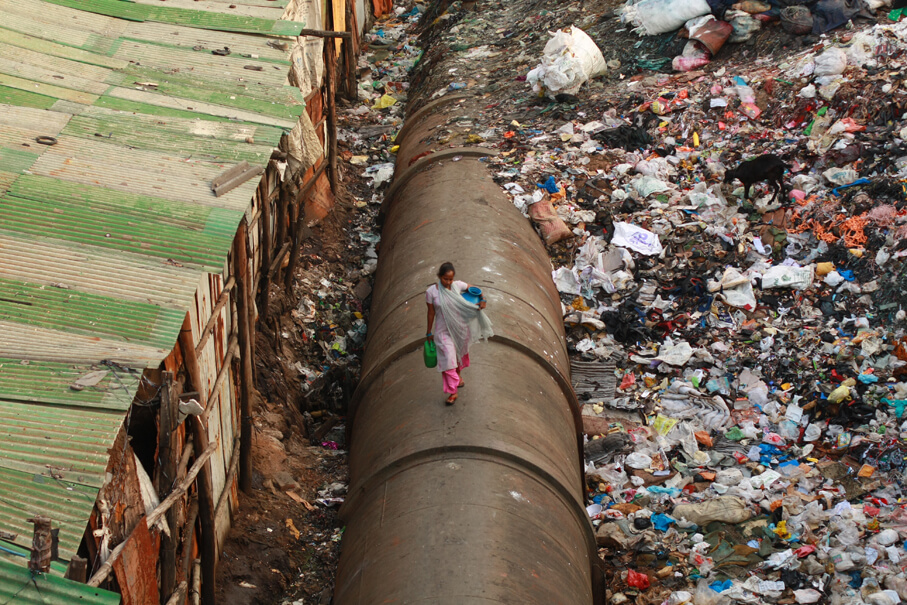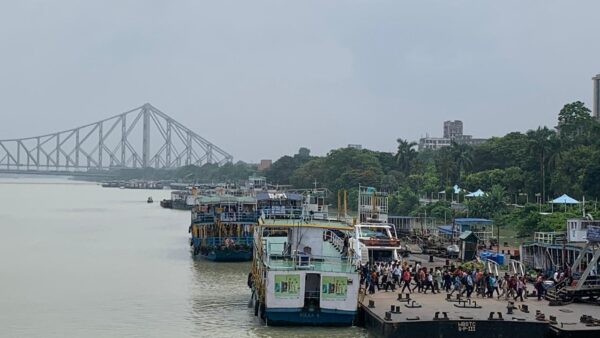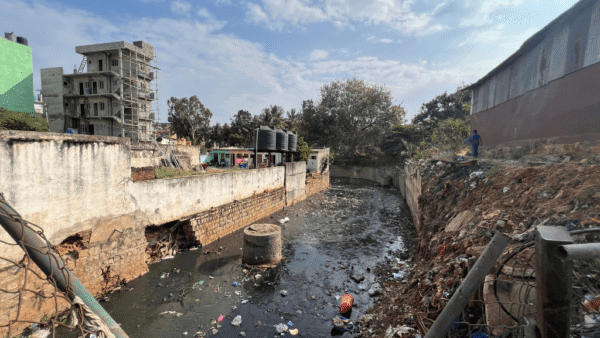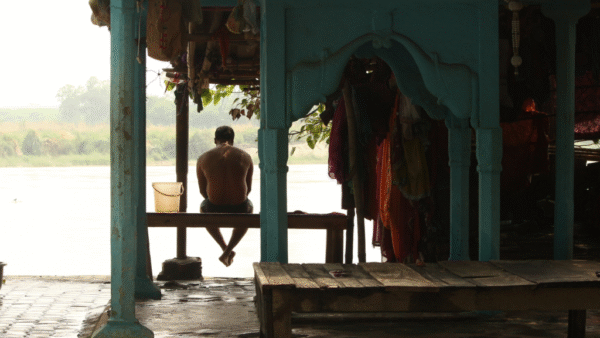The Brihanmumbai Municipal Corporation (BMC) currently has a water supply of 3,850 million litres a day (mld). Its estimate for year 2041 is that the city’s water demand will be 5,940 mld. If this demand is not met, the city is expected to face severe water shortages. As a result, the BMC is in the process of developing three large water resources development projects – Gargai Dam, Pinjal Dam and Damanganga-Pinjal link project – with a total capacity of 2,052 mld. Additionally, a desalination project of 200 mld is also in the process of being developed.
Mumbai is already receiving water from seven dams – Vihar, Tulsi, Tansa, Modak Sagar, Middle Vaitarna, Upper Vaitarna, and Bhatsa. Of these, six are built, and owned and operated by the BMC; the exception is Bhatsa. The question is: Does Mumbai really need these capital-intensive projects with considerable socio-economic and environmental costs? The answer is in the negative and explained in the following paragraphs.
Why the process of estimating water demand matters
While assessing the need for these projects, it is essential to understand how the large-scale projects are warranted. The evidence suggests such projects are justified by using figures of water shortages. In the technical documents prepared by the water supply department, BMC officials consistently report large figures of water shortages to build narratives of water shortages. These narratives are circulated and strengthened by city administrators, elected representatives, and the media, all of whom convincingly demand the development of a new dam for Mumbai.
Therefore, the process of estimating water demand and associated numbers needs to be scrutinised. Through this process, the water supply engineers of the BMC decide the current and future water demand. This process and the numbers produced are often presumed to be based on scientific procedure and, therefore, taken for granted. Thus, the public discourse limits itself to large-scale projects and their socio-economic and environmental impacts. The validity of the water demand figures is never investigated.
The process of estimating water demand is crucial as it determines the number of dams to be built, their sizes, the number of tribal villages to be displaced from neighbouring Thane and Palghar districts, and the magnitude of the environmental impact. Additionally, this process determines the amount of water to be diverted from the hinterlands, permanently undermining local socio-economic development there. Water scarcity hampers growth, making it a critical concern.
In the history of water supply of Mumbai, this process has been compromised multiple times and water demands are (over)estimated following unrealistic assumptions – to justify the development of dams. I discuss some of these instances in detail.
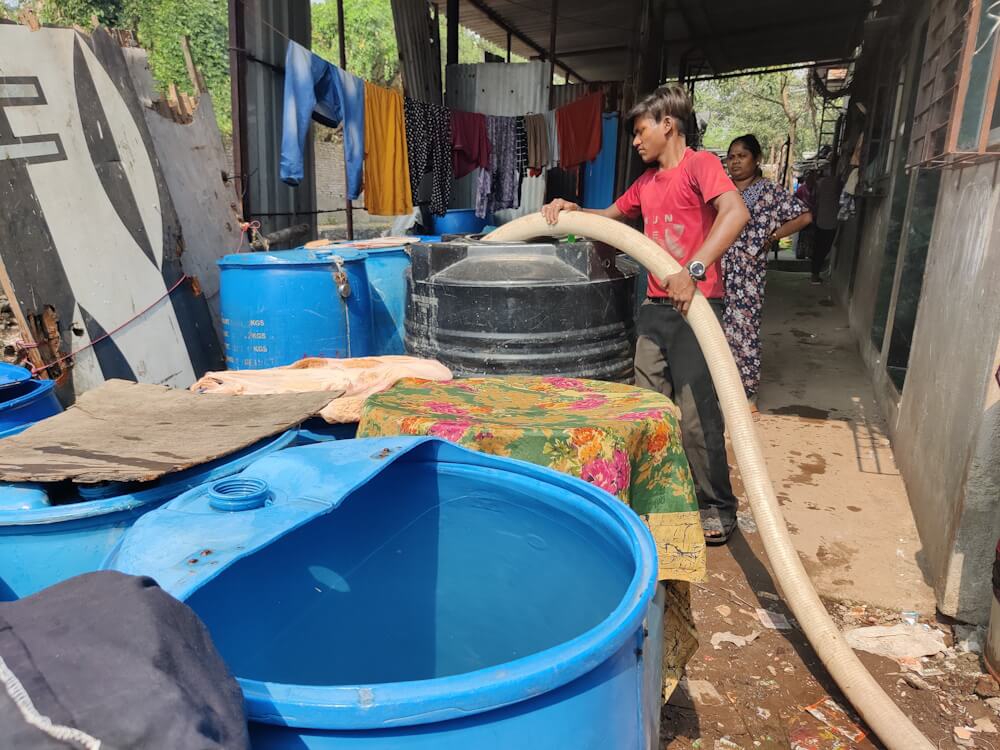
Photo: Jashvitha Dhagey
How much water do we need per capita per day?
In general, the urban water demand includes two components: domestic and non-domestic water demand. In the case of Mumbai, the non-domestic water demand has stagnated at around 10 percent of the total demand in the last three decades. After the 1980s, since the major water-consuming industries were relocated, the non-domestic water demand of the city had reduced significantly. Thus, the domestic water demand represents the major share, and investigating these figures is crucial. This domestic water demand is a product of two crucial figures – population and per capita standard of water supply.
For cities in India, the Central Public Health and Environmental Engineering Organisation (CPHEEO) – a technical wing of the Union Ministry of Housing and Urban Affairs – prescribes the per capita standards of water supply. Based on these standards, water supply schemes are designed and implemented. As per the CPHEEO standards, metropolitan cities like Mumbai should be provided with 150 litres per capita per day (lpcd), including minor non-domestic uses.
However, the BMC uses 240 lpcd as the standard for estimating domestic water use alone. The non-domestic water demand and losses are computed separately. When the BMC engineers are queried about the rationale behind such a high standard, they point to the Chitale Committee report.
In 1994, the then Maharashtra government appointed an Expert Committee under the leadership of Dr Madhav Chitale, recipient of the prestigious Stockholm Water Prize, to plan water resources for Mumbai. In this report, Dr Chitale used the standard of 240 lpcd to compute Mumbai’s current and future domestic water demand, covering its entire population at the time. However, this report provides no scientific rationale for using 240 lpcd as a per capita standard.
Since then, for the last three decades, the standard of 240 lpcd has been consistently and repeatedly used by merely referring to the Expert Committee report as an authoritative reference, where the reference itself did not provide any objective rationale or basis for the standard.
Moreover, in a personal conversation with this researcher and writer, Dr Chitale could not justify the figure of 240 lpcd and none of the BMC officials were aware of the rationale behind the 240 lpcd standard. Yet, this standard is continuously being used by BMC engineers.
Overestimating water demand
In 1994, using this standard, Dr Chitale forecasted that Mumbai would need 4,620 mld of water for the year 2001 and 5,400 mld in 2021. With these estimates, the committee computed the enormous water shortages of 1,727 mld and 2,507 mld for 2001 and 2021 respectively. By narrating these shortages, Dr Chitale recommended the construction of four large dams for the city and prescribed a temporary diversion of water reserved for irrigation purposes from Bhatsa dam to Mumbai as an immediate relief.
Considering the expertise of Dr Chitale, the Maharashtra government accepted the report and immediately approved the diversion of 455 mld of water from Bhatsa dam, which was reserved for irrigation, to Mumbai as a temporary measure. However, even after over two decades, this water has not been returned to the farmers in the Bhatsa canal command area.
Further, despite being a short-term forecast, the projected demand of 4,620 mld for 2001 significantly differed from the actual demand. This highlights a notable disparity between prediction and reality, as even after 20 years, the water supplied to Mumbai is 3,850 mld but there is no water shortage, as described below.
According to the census of 1991, 2001, and 2011, the slum population of Mumbai was 55.3 percent, 54.1 percent and 41.8 percent respectively. The 240 lpcd standard means the average household in Mumbai, with approximately five persons, consumes around 1,200 litres per day. Considering the situation of slum residents and the quality of service delivery – low pressure, intermittent supply, restricted and inconvenient supply hours – it was nearly impossible for half of the city population residing in slums to consume so much water. Moreover, the average slum resident in Mumbai does not even have the space to store 1,200 litres of water and use it. However, the Expert Committee preferred to use such a high standard and forecasted higher demand figures.
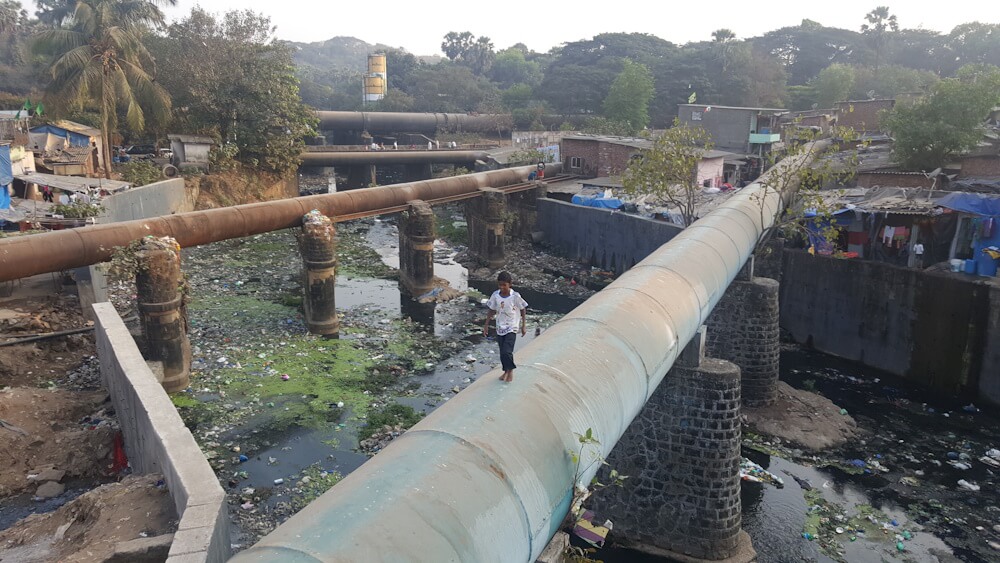
Photo: Wikimedia Commons
Double standards for slum residents
Moreover, the BMC engineers were following double standards. When Dr Chitale estimated the water demand of slum residents at the rate of 240 lpcd, the BMC was formally supplying only 45 lpcd to the slums in the city. Even today, after the Bombay High Court order of 2014, the BMC does not provide water to most non-notified slums while notified slums are formally supplied with only 100 lpcd – and not 240 lpcd.
Around two million slum residents in the city are not yet connected to the piped water supply.[2] In some of the slums, the residents are consuming as little as 20 lpcd. Thus, while justifying the development of the dam, the water demand of all slum residents was counted at the rate of 240 lpcd and later, the same water was either denied or much less was supplied, earlier 45 lpcd and now with 100 lpcd.
This illustrates the double standards followed by the water supply engineers in Mumbai. Following this approach, the engineers consistently overestimated the figures of water demand and, therefore, justified the development of dams in neighbouring districts.
The Chitale Committee also inflated the figures of non-domestic water demand. It estimated the non-domestic water demand of 700 mld for years 2001 and 2011. However, as stated earlier, the non-domestic water had decreased significantly after the 1980s. In 1991, the actual water consumption for industrial use was only 322 mld. Even after knowing that the non-domestic water demand would not increase further, the committee overestimated the demand figures. In 2005, the actual non-domestic water use was only 335 lpcd, less than half of the estimated figure.
Is there a water shortage?
The figures of per capita water availability at the city level, provided by BMC officials, indicate that in the last few decades Mumbai has been consistently receiving more than 250 lpcd. So, as indicated in Figure 1 (below), there were no water shortages at the city level. For example, in 2016, the per capita water availability at the city level was 252 lpcd, covering domestic and non-domestic water uses. Even after deducting around 10 percent share of non-domestic water use as stated above – that’s 25 lpcd – a sufficient quantity was available to serve domestic water demand accounting for the entire population. So, it can be concluded that there was no water shortage at the city level.
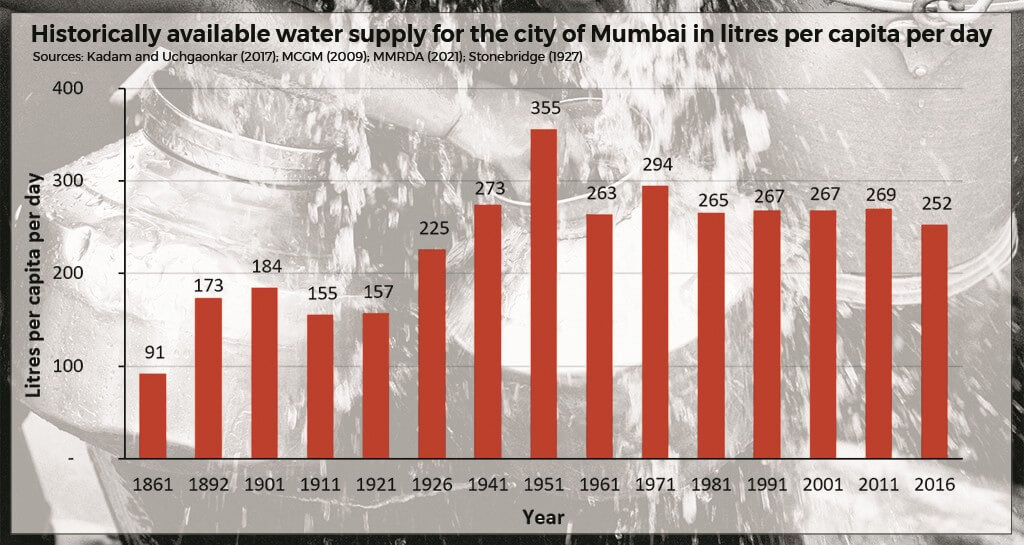
With ample water available at the city level, the persistent real issue is what happens to the water when it is put into Mumbai’s water distribution network. This network is old and leaky and there is no provision for measuring water losses. The conservative estimate (or guesstimate) is that these losses are around 40 percent, causing inequitable water distribution and shortages in the city.
Inequitable Water Sharing in the Mumbai Metropolitan Region
The data on water sharing within municipal corporations and councils of the Mumbai Metropolitan Region (MMR) suggest that water is inequitably shared within the MMR. Mumbai alone consumes the major share of water – nearly 67 percent – with the highest per capita consumption of 252 lpcd.
On the other hand, as indicated in Figure 2, Vasai-Virar, Mira-Bhayander, and Bhiwandi-Nizampur municipal corporations and the Alibaug municipal council are facing severe water shortages. The Vasai-Virar municipal corporation, the fastest-growing urban local body in the MMR, consumes only 70 lpcd, almost 50 percent less than the set standard of 135 lpcd. The Panvel Municipal Corporation experiences frequent water shortages during the summer months. Alibaug is managing with only 41 lpcd, even less than the rural water supply norm of 55 lpcd.
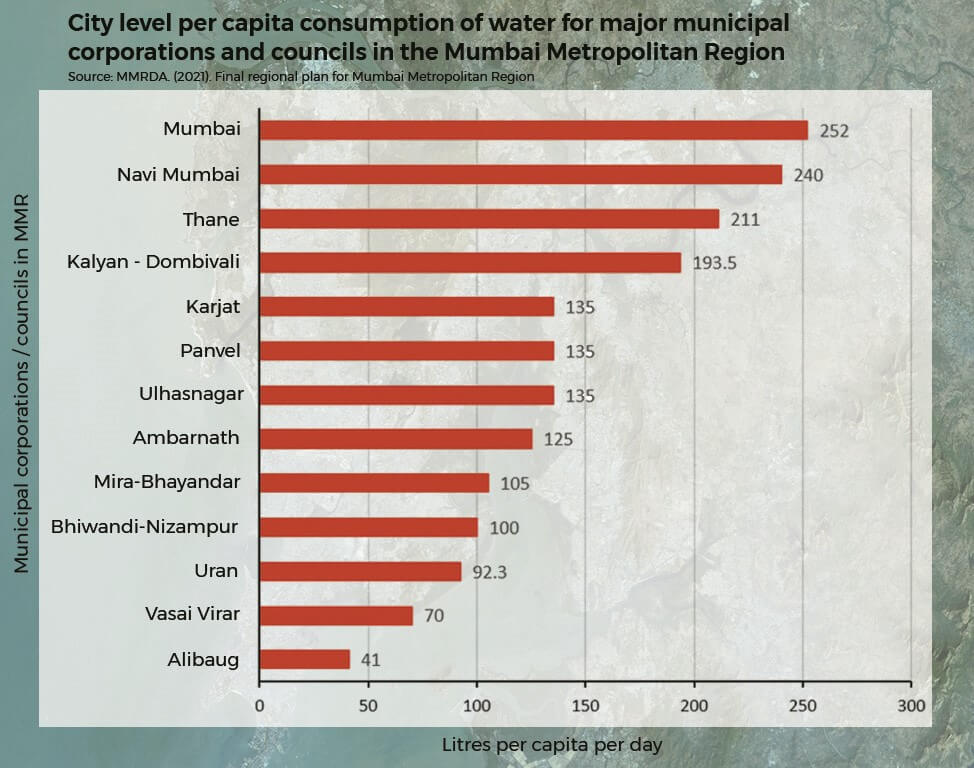
In the MMR, Mumbai can appropriate such disproportionate quantities of water,[4] as historically, BMC engineers were consistently busy in justifying, designing, and developing water resources for the city by narrating water shortages, as shown in Figure 3.
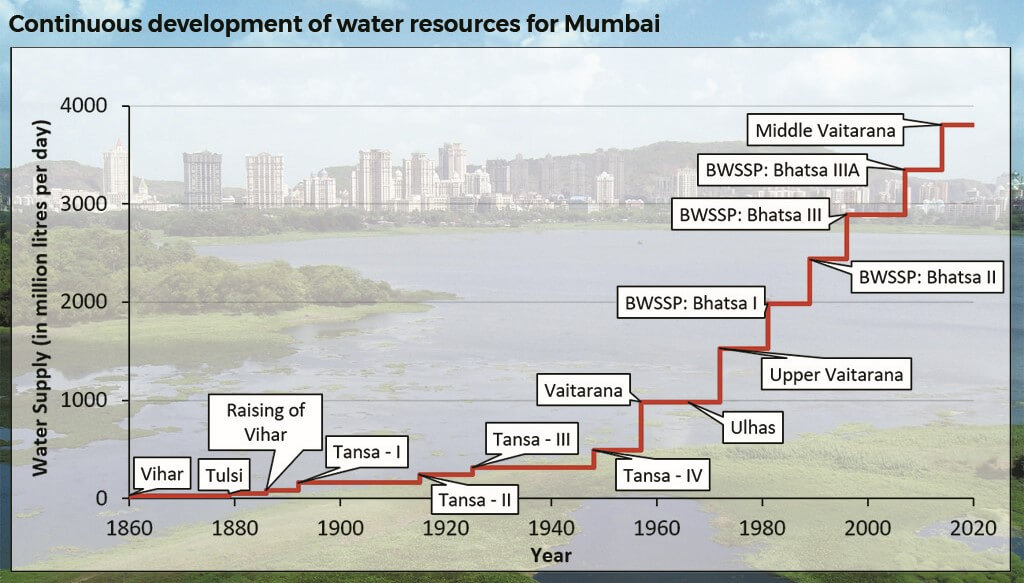
Dams are not the solution
The water issues of Mumbai cannot be solved by developing more dams or a desalination plant. The city already has enough water. The real issues are the inequitable distribution of water across the city and the vast number of leakages. By minimising the leakages, the city can save a significant amount of water and, thereby, avoid the development of dams and their subsequent socio-economic and environmental consequences. By developing dams and acquiring more water, the city is not only depriving tribal villages in the hinterlands but also other municipal corporations and councils of the metropolitan region. Thus, BMC needs to rethink its existing strategy of managing water resources for the city.
References:
Tiwale, S. (2021). Number Narratives of Water Shortages: Delinking Water Resources Development from Water Distribution in Mumbai, India. Water Alternative, 14, 841-865.
Expert Committee. (1994). Report of the Expert Committee (Water Planning) on Bombay’s future water resources and improvement in present water supply scheme.
Bhosle, P. (2021, September 22). Mumbai: 2 million people do not have legal access to water. Mid-Day.
Subbaraman, Nolan, L., Sawant, K., Shitole, S., Shitole, T., Nanarkar, M., . . . Bloom, D. E. (2015). Multidimensional measurement of household water poverty in a Mumbai slum: Looking beyond water quality. PloS one, 10(7), e0133241.
Kadam, A., & Uchgaonkar, S. B. (2017). Water Supply-Lifeline of Mumbai. Monthly Economic Digest – Special Publication on Water, Maharashtra Economic Development Council, XLVI(9), 122-125.; MCGM. (2009). White paper on Water Supply of Mumbai. Mumbai: Municipal Corporation of Greater Mumbai.; MMRDA. (2021). Final regional plan for Mumbai Metropolitan Region: Mumbai Metropolitan Planning Committee, Mumbai Metropolitan Region Development Authority.; Stonebridge, A. W. (1927). The Tansa completion works for the water-supply of Bombay. Minutes of the Proceedings of the Institution of Civil Engineers, 224(1927), 89-116.
Sachin Tiwale, PhD, associated with the Water and Society programme of the Ashoka Trust for Research in Ecology and the Environment (ATREE) in Bengaluru, specialises in studying water governance-related issues with a specific focus on equity and justice. His work delves into the intersection of the physical/natural water system and the human system. His research interests span urban water supply, irrigation management, and small-scale water service providers. He was earlier affiliated with the Centre for Water Policy and Governance, Tata Institute of Social Sciences, Mumbai.
Cover photo: A resident of Dharavi walks on water supply pipes to collect water for her home. Credit: Meena Kadri/ Flickr

